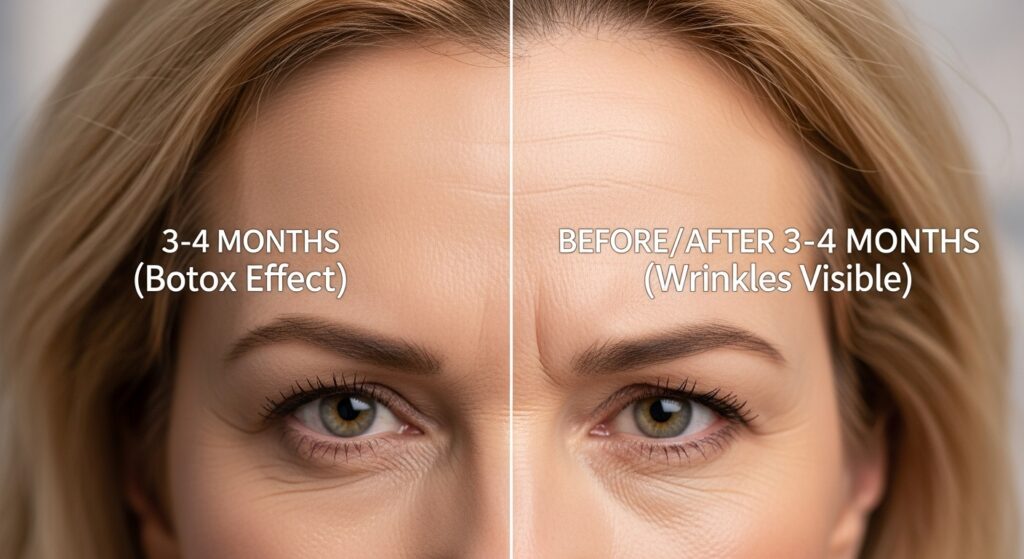In today’s world of aesthetic medicine, appearance and confidence often go hand in hand. Among the most popular non-surgical cosmetic treatments, Botox has secured a place as both a preventive and corrective solution for fine lines and wrinkles. Yet one question consistently arises for first-time and seasoned patients alike: how long does Botox last?
This article explores the science behind Botox, the factors that influence its duration, and why its longevity varies from person to person.
What Is Botox?
Before addressing the question of how long does Botox last, it is essential to understand what Botox is. Botox is the brand name for botulinum toxin type A, a purified protein derived from bacteria. When injected in controlled, tiny doses, it temporarily relaxes targeted muscles.
This relaxation prevents repetitive movements—such as frowning or squinting—that cause wrinkles to form. Botox is FDA-approved for cosmetic uses like reducing frown lines, forehead creases, and crow’s feet, as well as medical conditions such as chronic migraines and muscle spasms.
The Typical Duration of Botox
So, how long does Botox last once injected? On average, results typically last three to four months. However, this is a general guideline. Some individuals may notice their effects fading in as little as two months, while others may enjoy results that extend up to six months.
The longevity depends on:
-
Dosage used
-
Treatment area
-
Individual metabolism
-
Muscle activity
Understanding these factors helps set realistic expectations before starting treatment.
Why Botox Wears Off
To fully answer how long does Botox last, it helps to know why its effects eventually fade. Botox does not permanently alter muscle tissue. Instead, it temporarily blocks signals between nerves and muscles.
Over time, the body metabolizes the Botox protein, and the nerve endings regenerate. Once this happens, normal muscle activity resumes, and wrinkles or lines gradually reappear.
This natural process ensures that Botox is both reversible and safe when performed by licensed professionals.
Factors That Influence Longevity
Not everyone experiences the same duration. Several factors influence how long Botox lasts, including:
-
Metabolism: People with faster metabolisms often break down Botox more quickly.
-
Muscle strength: Stronger, more active facial muscles may require higher doses and may shorten the treatment’s lifespan.
-
Treatment area: Botox in smaller areas (like crow’s feet) may wear off sooner than larger areas (like the forehead).
-
Lifestyle choices: Frequent exercise, high stress, and smoking can all reduce how long it lasts.
-
Consistency of treatment: Regular sessions may “train” muscles to relax, sometimes extending the longevity over time.
What to Expect After Botox Treatment
Patients often ask not only how long does Botox last, but also what happens immediately after treatment. Typically, results are not instant.
-
Day 1–3: Mild redness or swelling may occur at injection sites.
-
Day 4–7: Muscles begin relaxing, and wrinkles start softening.
-
Week 2: Full results are visible, with smoother skin and reduced lines.
-
Month 3–4: Effects gradually fade as the body metabolizes the product.
This timeline helps patients understand when they will look their best and when to plan follow-up sessions.
Myths vs. Facts About Botox Longevity
When asking how long does Botox last, it’s important to separate myths from facts:
-
Myth: It lasts for a year or more.
-
Fact: Results typically peak at 3–4 months, rarely exceeding 6 months.
-
-
Myth: Once it wears off, wrinkles worsen.
-
Fact: Wrinkles simply return to their natural state; they don’t become worse because of treatment.
-
-
Myth: Higher doses always last longer.
-
Fact: Longevity depends on multiple factors, not just dosage.
-
By clarifying misconceptions, patients can approach Botox with confidence.
Extending the Effects of Botox
While the answer to how long does Botox last is largely biological, there are ways to help extend results:
-
Schedule touch-ups before full fading occurs.
-
Maintain a healthy lifestyle—avoid smoking, limit sun damage, and manage stress.
-
Pair with skincare routines like moisturizers, retinoids, or professional treatments.
-
Stay consistent with treatments, which may train facial muscles to stay relaxed.
These practices maximize results and maintain a fresh appearance for longer.
Botox for Different Ages and Goals
The longevity of Botox also depends on the reason for treatment.
-
Preventive Botox: Younger patients in their 20s or 30s use Botox to prevent lines from deepening. Results may last slightly longer since muscles are less developed.
-
Corrective Botox: Older patients with established wrinkles may notice shorter durations due to stronger muscle activity.
Understanding personal goals ensures realistic expectations about how long Botox lasts in each situation.
Challenges and Considerations
Like any medical procedure, it comes with challenges:
-
Individual variability: No two patients metabolize Botox the same way.
-
Financial planning: Since results last a few months, ongoing treatments are needed.
-
Overuse concerns: Excessive reliance may lead to an unnatural look if not managed by a skilled injector.
Despite these considerations, millions continue to choose it because of its effectiveness, safety, and quick results.
Looking Ahead: The Future of Botox Longevity
As aesthetic medicine evolves, researchers are exploring ways to extend the answer to how long does Botox last.
Future trends may include:
-
Longer-lasting formulations of botulinum toxin.
-
Combination therapies with fillers and skincare for comprehensive results.
-
Personalized dosing guided by AI and genetic testing.
These innovations could transform Botox from a 3–4 month solution into something more enduring.
Conclusion
So, how long does Botox last? While the typical range is three to four months, many factors—from metabolism to lifestyle—determine exact longevity. What remains consistent is the transformative power of Botox to restore confidence and soften signs of aging.
For those seeking smoother skin, preventive care, or corrective solutions, it offers a reliable, temporary approach with long-lasting benefits when maintained regularly.
In the end, the answer is clear: It lasts only a few months, but the boost in self-confidence can endure far longer.





